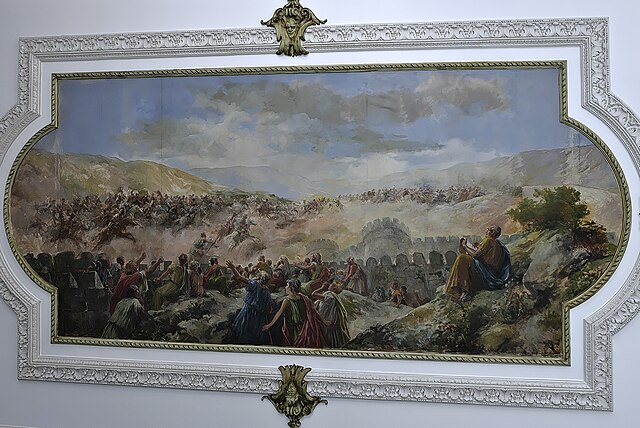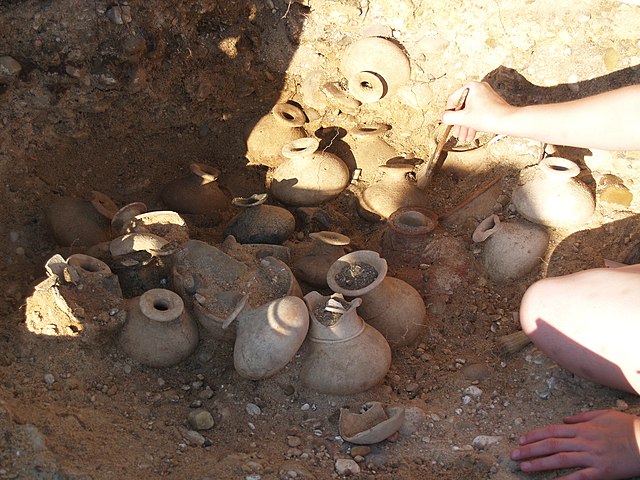The Vaccaei or Vaccei were a pre-Roman Celtic people of Spain, who inhabited the sedimentary plains of the central Duero valley, in the Meseta Central of northern Hispania. Their capital was Intercatia in Paredes de Nava.
Painting depicting the Vaccaei going out to defend Palencia from the troops of Lucius Licinius Lucullus (151 BC). (Artist: Eugenio Oliva)
A grave excavated at Pintia in June 2008, containing many perfume bottles
Image: Caja excisa Soto de Medinilla 20140708
Image: Vaso (24567633057)
The Celtiberians were a group of Celts and Celticized peoples inhabiting an area in the central-northeastern Iberian Peninsula during the final centuries BC. They were explicitly mentioned as being Celts by several classic authors. These tribes spoke the Celtiberian language and wrote it by adapting the Iberian alphabet, in the form of the Celtiberian script. The numerous inscriptions that have been discovered, some of them extensive, have allowed scholars to classify the Celtiberian language as a Celtic language, one of the Hispano-Celtic languages that were spoken in pre-Roman and early Roman Iberia. Archaeologically, many elements link Celtiberians with Celts in Central Europe, but also show large differences with both the Hallstatt culture and La Tène culture.
Bronze Celtiberian fibula representing a warrior (3rd–2nd century BC)
Celtiberian biglobular daggers
Celtiberian antennas swords
Engraving of the Siege of Numantia








